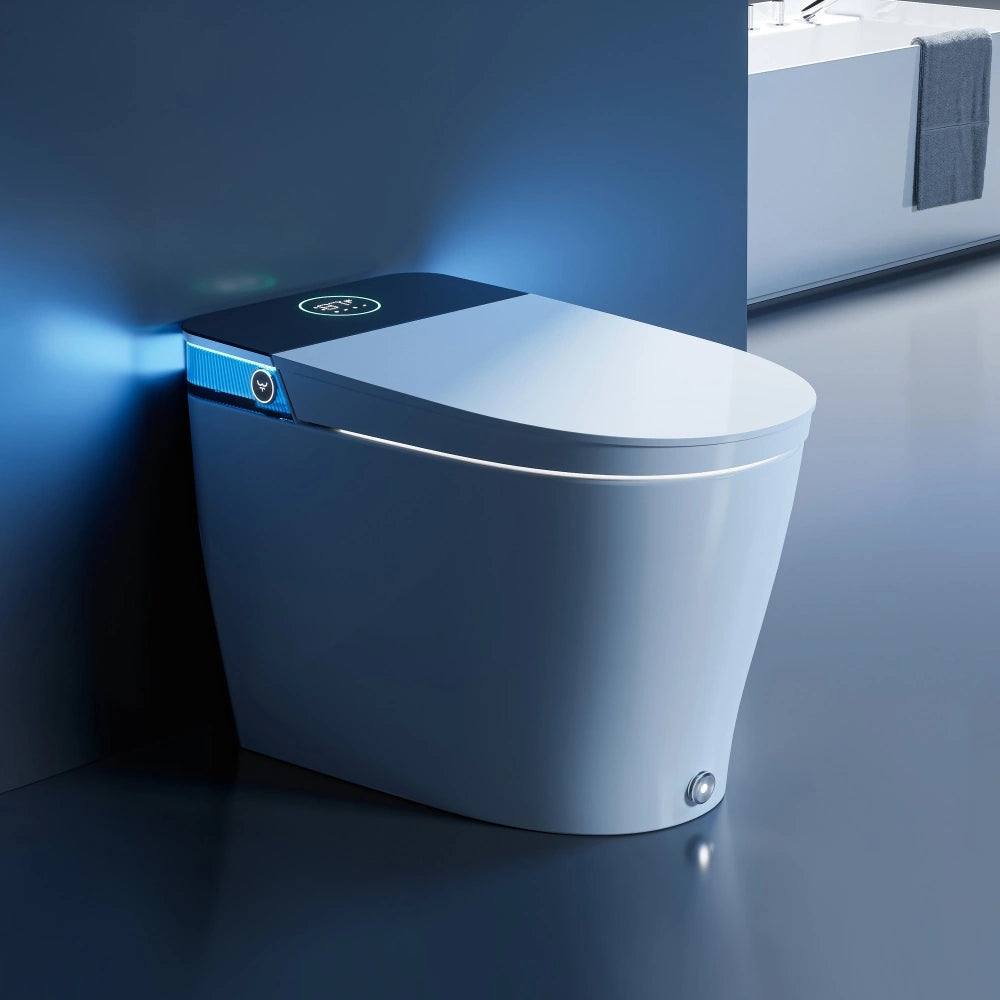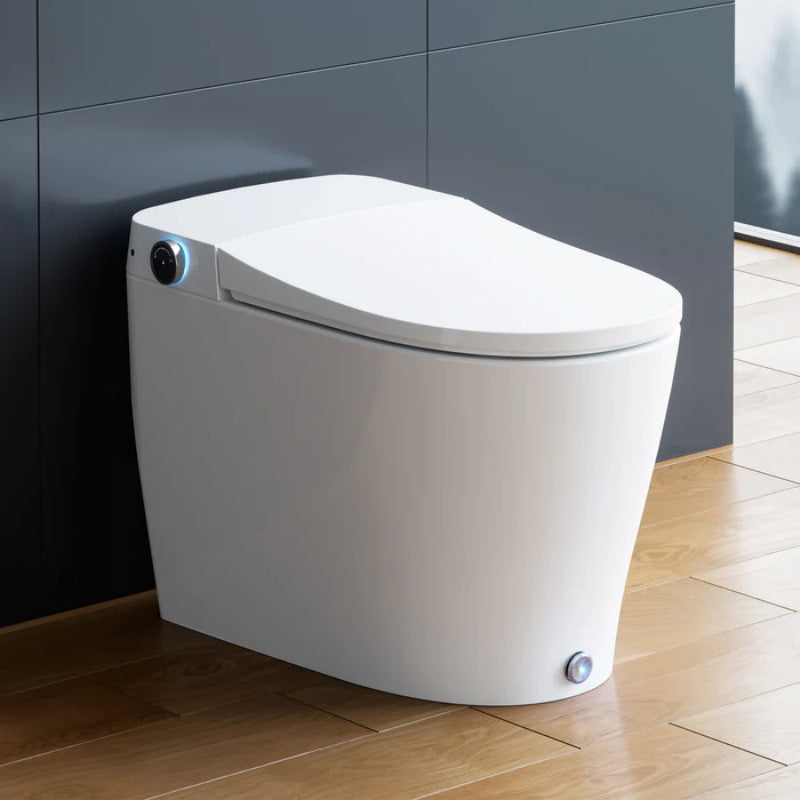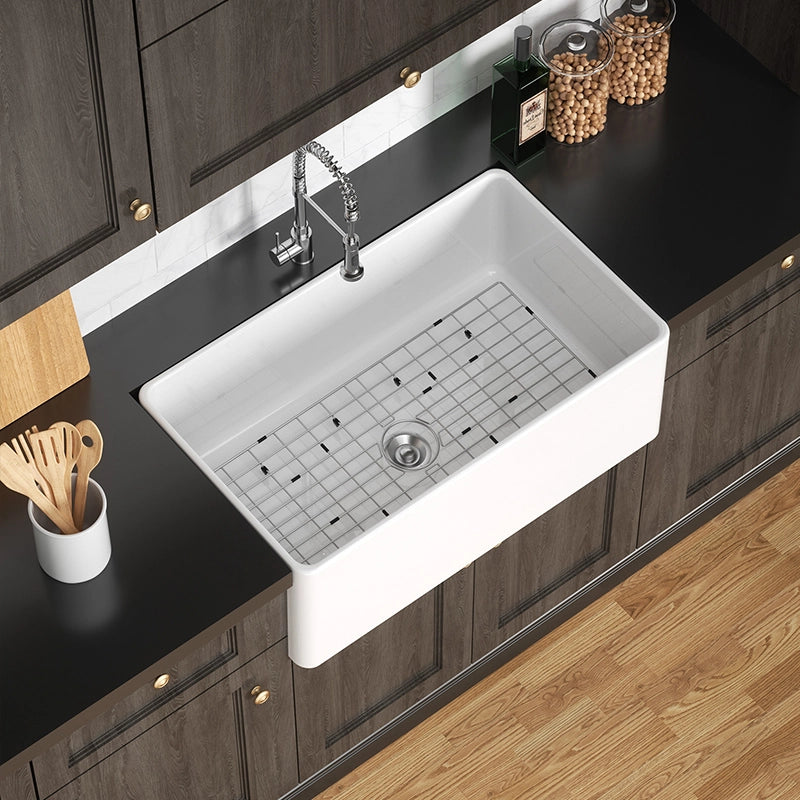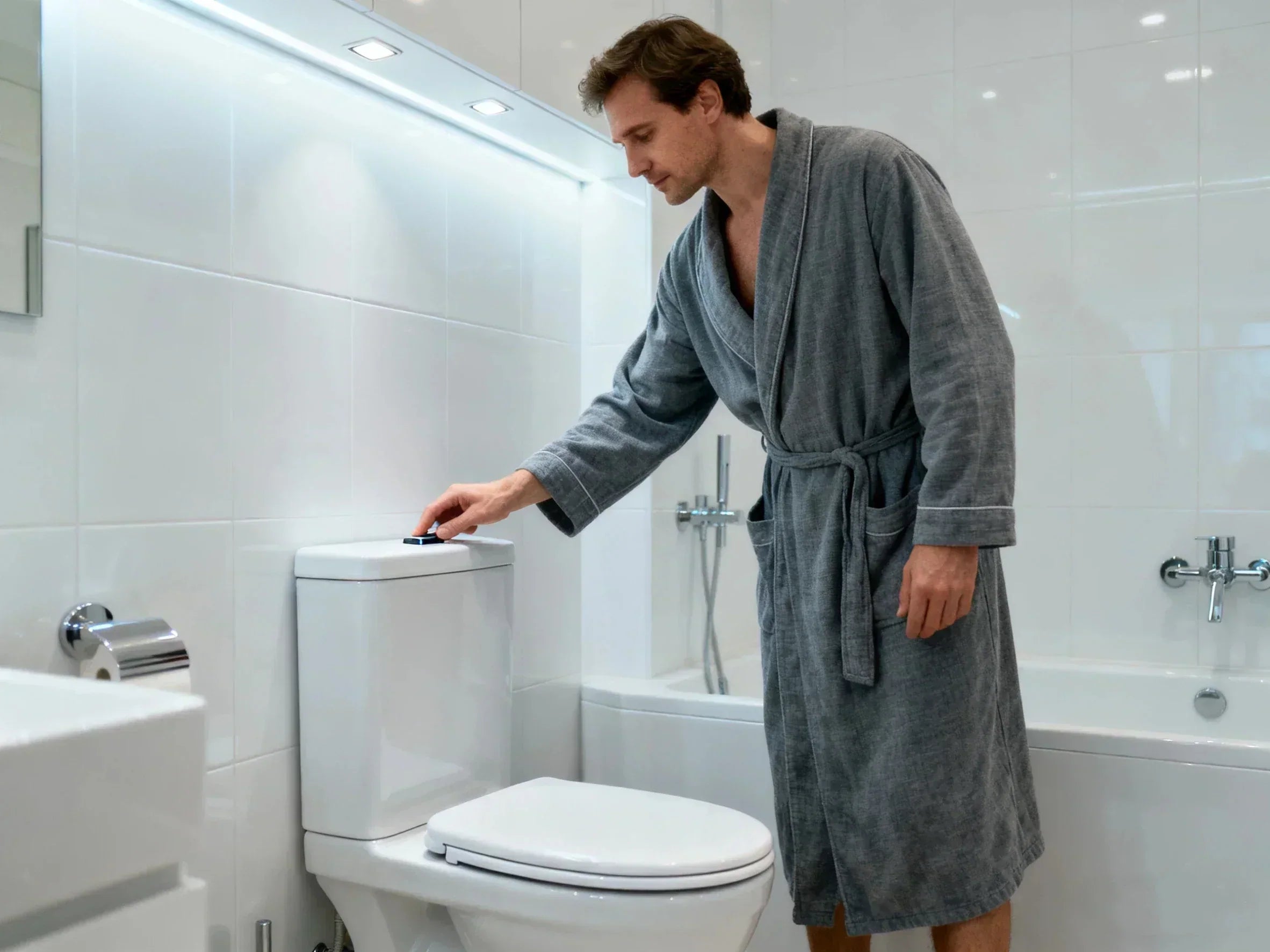Knowing toilet anatomy helps you better understand toilet design, performance, and how to fix small issues. It affects comfort, water bills, and how fast you fix little annoyances like a running toilet or weak flush. In this guide, you’ll get a clear walk-through of toilet anatomy, how a toilet flush works, and which toilet tank parts fail most often. We’ll start with the essentials—tank and bowl parts, what each part does, and the simple flush sequence—then move into variations, troubleshooting, maintenance, and water‑saving options. Along the way, you’ll see data-backed tips (for example, why a worn flapper is the top cause of leaks) and practical steps.
Toilet Anatomy Overview: Tank and Bowl Systems
A toilet is two main systems working together: a water‑storing tank and a siphon‑shaped bowl. The tank starts the action; the bowl completes it. When you flush the toilet, water moves fast from the tank to the bowl, triggers a siphon in the bowl’s curved passage, and carries water and waste into the sewer line. Then the tank refills for the next flush.
Quick parts map (parts of a toilet)
-
Tank: handle/lever, trip lever (arm), lift chain, rubber flapper (flapper valve), flush valve (valve seat), fill valve (ballcock), float, overflow tube, refill tube, tank bolts and tank-to-bowl gasket
-
Bowl/base: rim holes, siphon jet, trapway (S‑bend), outlet, toilet flange, wax ring, closet bolts, seat, lid, hinges
-
External: fresh water supply line, shut‑off valve (angle stop)

How the systems interact during a flush and refill
-
Trigger: The handle lifts the trip lever and chain, raising the flapper.
-
Surge to bowl: The flapper opens the flush valve opening, sending tank water into the bowl through the rim and siphon jet.
-
Siphon: Fast flow starts the siphon in the trapway; water and waste exit the bowl.
-
Reseal and refill: The flapper drops and seals; the fill valve refills the tank and sends some water into the overflow tube to set the right bowl level.
-
Stop: The float rises with the water level and shuts the fill valve. The toilet stops.
Toilet Tank Parts: Functions, Failures, Fixes
The tank is where most toilet repair happens—and where toilet anatomy reveals its complexity. If you’ve asked, “What are the parts inside a toilet tank called?” the main list is: handle/lever, trip lever arm, lift chain, flapper, flush valve, fill valve, float, overflow tube, and refill tube.
Two parts fail most often: the flapper and the fill valve.
Handle, trip lever, and lift chain (toilet tank parts)
The toilet handle connects to an internal metal or plastic arm called the trip lever. A small toilet chain links the lever to the flapper. When you push the handle, the lever lifts the chain and raises the flapper so water can rush out.
Common issues are simple:
-
A loose handle or corroded lever makes the lift weak.
-
Chain too tight means the flapper can’t seal; too slack and it won’t lift fully.
-
Chains can snag on internal parts.
Quick fixes:
-
Tighten the handle nut inside the tank. Right‑hand threads outside, reverse inside—turn gently so you don’t crack the porcelain.
-
Adjust chain length so there’s about 1/2 to 3/4 inch of slack when the flapper is closed.
-
Replace a bent or corroded lever. It’s a 5‑minute swap.
If you’ve ever pushed the handle and felt nothing, that’s often a chain that popped off the flapper hook. Just reattach.
People also ask: What are the main parts of a toilet tank? In short: handle, trip lever, lift chain, flapper, flush valve, fill valve, float, overflow tube, refill tube, and gaskets/bolts.
Flush valve and flapper (running toilet and phantom flush)
The flush valve is the big opening at the bottom of the tank. The rubber flapper covers it between flushes. When you flush, the flapper lifts and lets a surge of water exit. Then it falls back and seals so the water in the tank can refill and wait for the next flush.
Failure modes:
-
A warped or worn flapper toilet seal often leaks water into the bowl, leading to what’s commonly called a running toilet or “phantom flush”—the fill valve kicks on randomly to top off the tank.
-
Mineral buildup or a nick on the valve seat prevents a good seal.
-
A cracked or aging flush valve gasket leaks water where the tank meets the bowl.
Fast facts that matter for your bill:
-
About 10% of homes have leaks, and flappers are the top culprit. Small leaks can waste hundreds of gallons each month.
Fixes:
-
Shut off the water at the angle stop behind the toilet, flush to empty most of the tank, and wipe the valve seat clean. If you feel rough spots, consider a new flush valve kit.
-
Replace the flapper. Match the size (most are 2-inch or 3-inch) and hinge style. If the seat is pitted, replace the whole flush valve.
-
Re‑aim the chain so it hangs straight over the flapper and doesn’t catch.
Why does my toilet keep running? Most of the time, the flapper isn’t sealing, the chain is too tight, or the fill valve is overfilling.
Fill valve, float, overflow tube, refill tube (slow fill, noisy fill)
The fill valve opens to allow water to the toilet from your home’s water supply. When the tank level drops, the float lowers and opens the valve. As the tank refills, the float rises and shuts off the flow. The overflow tube protects the tank from overfilling by sending extra water into the bowl. The small refill tube clips to the overflow tube and sends a small stream to set the bowl’s waterline after a flush.
Common issues:
-
Noisy fill or “chatter” often points to high pressure or a failing valve.
-
Slow fill can mean debris in the valve or a clogged supply line screen.
-
Overfill happens when the float is set too high or the refill tube is pushed too far down the overflow tube, creating a siphon.
Adjustments that help:
-
Set the water level in the tank about 1/2 to 1 inch below the top of the overflow tube.
-
Clip the refill tube so it points into the top of the overflow tube but doesn’t go down inside it.
-
If your valve is old or loud, consider a quiet, anti‑siphon style fill valve.
How do I adjust a toilet fill valve?
-
Turn off the angle stop, flush, and remove the tank lid.
-
For float‑cup styles, turn the adjustment screw or slide the clip to raise or lower the float.
-
For float‑ball styles, gently bend the float arm down to lower the level or up to raise it.
-
Turn water back on and test. Make sure the waterline stops below the overflow tube.
Tank-to-bowl gasket, bolts, and seals
The tank and the toilet bowl connect with bolts and a thick rubber or foam gasket around the flush valve. This gasket ensures a watertight seal. Over time, gaskets dry out and washers crack, causing slow drips from the bottom of the toilet tank or around bolt heads.
Good practice:
Replace bolts, washers, and the sponge gasket together using a matching kit. Tighten bolts evenly, side to side, and stop once snug. Porcelain cracks if you over‑torque. If the tank rocks, drain the tank and reseat it with fresh hardware.

Anatomy of A Toilet Bowl, Trapway, and Base
Among key toilet bowl parts, the bowl itself is shaped to start and hold a siphon that drives each flush. When enough water enters, the siphon pulls the bowl clean and sends waste down the trapway.
Rim holes and siphon jet (cleaning mineral buildup)
During a flush, water flows through small rim holes to rinse the bowl. Many bowls also have a siphon jet, a larger opening at the front of the bowl that shoots water toward the trapway to kickstart the siphon. In hard‑water areas, mineral scale can block these openings. The result is a weak flush or water that swirls without fully clearing.
Care tips:
-
Use a safe descaling cleaner and a small nylon brush or a wooden skewer to clear the rim holes. Avoid metal picks that scratch porcelain.
-
Clear the siphon jet opening with the same gentle approach.
-
Regular cleaning keeps the flow of water strong.
Trapway and sewer gas protection (how the trap works)
The trapway is the S‑shaped path at the base of the bowl. It holds a small “water seal” that blocks sewer gases from coming back into the room. During a flush, the bowl fills and the outlet flow rises to a point where a siphon starts, pulling waste out. After the siphon breaks, the water seal remains in place.
People also ask: What is a toilet trapway? It’s the curved internal channel that connects the bowl to the outlet. A typical trapway is around 2 inches in diameter in many homes. A smoother, well‑glazed trapway resists clogs better.
Outlet, toilet flange, wax ring, closet bolts (leaks at base)
At the base of the toilet, the outlet drops into the toilet flange, which connects to the drain pipe. A wax ring or waxless seal fits between the toilet and the floor to make a watertight seal. Closet bolts clamp the bowl to the flange.
If you see water at the base after a flush, the wax ring may have failed or the bowl may be rocking on an uneven floor. Shims can help stabilize. If the flange is corroded or too low, use a repair kit or spacer ring. When you reset the bowl, tighten bolts evenly and avoid overtightening, which can crack the base.
Seat, lid, hinges; supply line and shut-off valve
Seats come in round and elongated shapes, with options like soft‑close and quick‑release. Choose the shape that matches your toilet bowl. The supply line feeds water from the wall shut‑off valve (angle stop) to the fill valve. A braided stainless line with 3/8‑inch compression fittings is common. Test the shut‑off valve once a year so it doesn’t seize up.
What is toilet hardware called? In plain language, “toilet hardware” or “toilet repair parts” covers the bolts, gaskets, hinges, levers, supply line, angle stop, fill valve, flush valve, flapper, and mounting parts that fasten and seal the connection between the tank and bowl and the connection between the toilet and the drain.

How a Toilet Flush Works (Step-by-Step)
Before diving into the mechanics, it helps to picture what actually happens when you press that flush handle. A toilet flush is a quick chain reaction driven by gravity, pressure, and clever toilet anatomy design. Each component—from the handle and flapper to the siphon jet and trapway—plays a role in sending waste smoothly down the drain and refilling the bowl for the next use.
Gravity-fed sequence (siphonic toilet)
-
Step 1: Actuation and flapper lift. The handle moves the lever and chain; the flapper lifts off the flush valve.
-
Step 2: Rapid tank-to-bowl flow. Water rushes from the tank into the toilet bowl through rim holes and the siphon jet.
-
Step 3: Siphon peak and waste evacuation. Flow accelerates, the siphon in the trapway pulls waste out to the drain.
-
Step 4: Seal re-close; refill and shutoff. The flapper falls and seals. The fill valve restores the tank and sends a trickle into the overflow tube to set bowl level. The float rises and stops the fill.
Siphoning physics and venting (anti-siphon considerations)
Siphoning is a pressure difference. Fast water into the bowl pushes water over the trap’s bend. Once the outlet side fills, the falling column of water pulls the rest along. Your home’s vent stack lets air into the drain lines so pressure stays even. Without good venting, you may hear gurgling and see slow drains.
Backflow protection matters, too. Modern fill valves include anti‑siphon features so water from the bowl can’t siphon back into your clean supply. Don’t jam the refill tube down the overflow; clip it to the top to prevent a siphon path.
Variations & Comparisons: Gravity, Pressure-Assisted, Dual-Flush
All toilets share the same basic toilet anatomy, but how they move water can vary widely. Gravity-fed systems rely on height and pressure, while pressure-assisted designs use compressed air for a stronger flush. Whether single- or dual-flush, understanding toilet anatomy helps you pick the right type for your home and diagnose performance differences easily.
Gravity-fed vs pressure-assisted (pros/cons)
-
Gravity-fed: Uses tank height and gravity. It’s quieter, simpler, and easy to fix with common toilet parts. Modern models flush about 1.28–1.6 gallons per flush (GPF). Good for most homes.
-
Pressure-assisted: Uses stored air pressure to boost the flush. Bowls are often larger and clear faster on long drain runs. They are louder, and replacement parts can cost more. Good for heavy use or tough plumbing layouts.
Single-flush vs dual-flush mechanisms
Single‑flush toilets deliver one volume. Dual‑flush offers two options: a lower‑volume flush for liquids and a higher‑volume flush for solids. Many have a button tower instead of a lever. Some use adjustable flappers or seals to tune water use. Check that parts are easy to get and that you can service them without special tools.
One-piece vs two-piece; round vs elongated; ADA height; wall-hung
One‑piece toilets have the tank and bowl fused together, which is sleek and easy to clean but heavier to install. Two‑piece models are more common and easier to move in parts. Round bowls save space; elongated bowls add comfort. ADA or “comfort height” seats sit higher, which helps many adults. Wall‑hung toilets mount to a hidden carrier in the wall and make floor cleaning simple; they need a sturdy frame and proper rough‑in planning.
Regional/historical types and compatibility notes
Older high‑tank pull chains, washdown bowls (common in some regions), and siphonic bowls all move water differently. If you’re adding a bidet seat, make sure you have a reliable shut‑off valve and a solid supply line. Check that your toilet flange and rough‑in (10, 12, or 14 inches) match the model you choose.
Fixing Common Toilet Problems: From Running to Weak Flush
Before jumping into fixes, it helps to match what you see with what’s really going on inside the toilet. Many common problems—like running water, weak flushes, or mysterious refills—come down to just a few worn or misadjusted parts. The table below breaks down each symptom, the likely cause, and a quick fix so you can diagnose issues fast and know when it’s time to call a plumber.
Symptom → cause → fix matrix
| Symptom | Likely cause | Quick fix | Call a pro if… |
|---|---|---|---|
| Running toilet | Worn flapper, chain too tight, high float, refill tube down overflow | Replace flapper; adjust chain; set waterline 1/2–1 inch below overflow; clip refill tube at top | Tank still drains or won’t stop after new parts |
| Phantom flush (intermittent refills) | Slow tank leak past flapper/flush valve seat | Dye test; clean seat; replace flapper; replace flush valve if seat is pitted | You see cracks in tank or leaks at tank bolts |
| Weak/partial flush | Low tank level; clogged rim holes/siphon jet; obstructed trapway | Raise float; descale rim/jet; plunge; if needed, closet auger | Frequent clogs persist or drains gurgle (possible vent or line issue) |
| Slow fill/noisy fill | Debris in fill valve; high pressure; failing valve | Flush valve screen; replace fill valve; add hammer arrestor if needed | Hammer shakes pipes or valve won’t shut off |
| Leaks at base | Failed wax ring; rocking bowl; damaged flange | Shim bowl; reset with new wax or waxless seal; repair flange | Flange is broken below floor level or subfloor is rotted |
| Odors | Dry trap (rare); wax failure; vent issue | Ensure bowl waterline is stable; reset wax; check for cracks | Sewer gas persists or other fixtures gurgle |
| Sweating tank | Humid room; cold supply water | Add tank insulation or mixing valve; improve ventilation | Condensation causes repeated floor damage |
Case study: Phantom flushing (flapper failure)
A homeowner hears the tank kick on every hour. There’s no visible water on the floor. A simple dye test (food coloring in the tank) shows color creeping into the bowl without flushing. The toilet leaking into the bowl points to a worn flapper or rough flush valve seat. Learning how to fix a toilet flapper with the correct size restores the seal and stops the waste. This small fix can save hundreds to thousands of gallons per year, and it often takes less than 10 minutes.
DIY vs call-a-pro decision guide
Most small tank fixes are DIY tasks—ideal for anyone repairing a toilet, such as replacing a toilet flapper, adjusting the fill valve, swapping a handle, set the chain, replace a supply line, or install a new seat. Turn off the angle stop first. Keep a small sponge or a wet‑dry vac handy to clear standing water in the tank when you’re working “inside the tank.”
Call a pro when you see cracked porcelain, need a full flange rebuild, have persistent sewer odor, or suspect venting or main line issues. Those jobs need tools and experience most homes don’t have.
Why won’t my toilet flush all the way? Common reasons are low tank level, blocked rim holes, a clogged siphon jet, or an obstruction in the trapway. Raise the float, descale, and use a proper plunger or a closet auger. How do I stop a toilet from overflowing? Shut the angle stop, lift the tank lid, and push the flapper down to stop water entering the bowl. If needed, remove the tank chain hook so the flapper stays sealed. Then clear the bowl with a plunger.

Maintenance Planner, Lifespans, and Costs
A little care keeps your toilet quiet and efficient. Replacing small toilet repair parts on time prevents water waste and emergency calls.
Replacement intervals and typical costs
| Part | Typical replacement interval | Typical DIY part cost (USD) | Skill/time |
| Flapper | 3–5 years | $6–$20 | Easy / 5–10 min |
| Fill valve | 5–7 years | $15–$40 | Easy / 15–30 min |
| Wax ring or waxless seal | 10+ years (as needed) | $5–$30 | Moderate / 1–2 hrs (requires lifting bowl) |
| Supply line | 5–10 years | $8–$20 | Easy / 10 min |
| Handle/lever/chain | As needed | $5–$20 | Easy / 10 min |
| Tank-to-bowl gasket/bolts | 10+ years (as needed) | $10–$25 | Moderate / 30–60 min |
Note: The North American toilet repair parts market is large because parts like flappers, fill valves, and wax rings are replaced often in normal home care.
Preventive care checklist
-
Quarterly: Do a dye test for leaks. Check the water level in the tank, the float, and the refill tube position.
-
Twice a year: Clear rim holes and the siphon jet with a safe descaler if you have hard water.
-
Annually: Exercise the angle stop (turn it off and back on), inspect tank bolts and gaskets, and check the seat hinges.
-
After any work: Flush and watch for drips at connections and the bottom of the flush valve.
Smart upgrades and specs to watch
If you’re upgrading, look for:
-
Adjustable flappers to fine‑tune water into the bowl for a clean flush.
-
Quiet, anti‑siphon fill valves with easy height adjustment.
-
Insulated tanks to reduce sweating in humid rooms.
-
Strong lab test scores for solid waste removal (MaP score). Aim for high performance, not just low GPF.
-
Brass or high‑grade polymer hardware for bolts and hinges.
Water Efficiency, Sustainability, and Standards
Modern toilets use a fraction of the water older models used. That’s good for your bill and your city’s supply.
Water use facts and savings potential
A modern high‑efficiency toilet (HET) uses about 1.28 GPF. Older toilets (pre‑1980) often used 5–7 GPF. That’s a big reduction over time. Toilets make up a large share of indoor water use in many homes. Small leaks are common and costly, and the fix is often just a replace the flapper or valve adjustment. Repairing leaks and upgrading to WaterSense‑certified models often pays back faster than people expect, especially in cities with higher water rates.
Labels, codes, and performance benchmarks
Here’s what to look for when you buy or inspect:
-
WaterSense label: Certifies high efficiency and performance at 1.28 GPF or less. Good for both water savings and flush quality.
-
ASME/CSA standards: Residential toilets are tested to a performance standard that covers trap seal, flush volume, and more.
-
MaP testing: Independent performance scores for solid waste removal. Higher scores mean fewer double flushes and fewer clogs.
-
Plumbing codes: Check local rules (IPC or UPC) and rough‑in sizes (10, 12, or 14 inches). Code compliance ensures parts like anti‑siphon valves are used and venting is correct.
Leak detection and savings calculator (interactive)
A simple web tool can estimate savings:
-
Input: Your water rate, a likely leak size (for example, a flapper that leaks every few minutes), and the cost of a flapper.
-
Output: Monthly and yearly water waste and savings if you fix it today.
Even without a tool, a dye test and a $10 part often stop a leak that runs your meter every hour. That’s real money.

What is a good GPF for a toilet?
Aim for 1.28 GPF with the WaterSense label. Pair that with a strong MaP score so you get both savings and a clean bowl in one flush.
FAQs
1. What are the parts of the toilet called?
The main parts of a toilet are divided into a few key sections: the tank, the bowl, the base, and the external plumbing. Inside the tank, you’ll find the handle or lever, trip lever, lift chain, flapper, flush valve, fill valve, float, overflow tube, refill tube, and the tank bolts and gasket. These work together to store and release water for each flush. The bowl includes the rim holes (where water rinses down from the rim), the siphon jet (which helps create suction during the flush), the trapway (the curved drain channel), and the outlet leading to the drainpipe. At the base, there’s the wax ring, flange, and closet bolts—these create a watertight seal and secure the toilet to the floor. Finally, the external plumbing includes the supply line that brings in water and the shut-off valve used to stop the water flow during repairs or maintenance.
2. What is the anatomy of a low flow toilet?
A low flow toilet has the same essential structure as a standard model—tank, bowl, flapper or flush tower, fill valve, and trapway—but it’s engineered for efficiency. The biggest difference is in how it uses water. While older models might use 3.5 gallons or more per flush, low-flow toilets use about 1.28 gallons per flush (GPF) thanks to narrower trapways, optimized rim jets, and stronger siphon action. In short, the design focuses on using water pressure and gravity more effectively to maintain a powerful flush while conserving water, making it both eco-friendly and cost-efficient.
3. What is the anatomy of an old toilet?
Older toilets share the same basic layout—tank, bowl, and base—but they tend to be less efficient and use more water per flush, typically around 3.5 to 7 gallons. Inside the tank, you’ll often see a float ball on a metal rod to control water level, a simple 2-inch flapper, and a large tank to hold more water. Although they flush well due to the large water volume, older toilets waste water and may not meet modern efficiency standards. Still, they’re built tough and many can be retrofitted with updated parts for better performance.
4. What are the parts inside a toilet tank called?
Inside a toilet tank, you’ll find several interconnected parts: the handle or lever you press to flush, the trip lever and lift chain that pull up the flapper, which releases water from the flush valve into the bowl. Then there’s the fill valve (sometimes called the ballcock), which refills the tank and controls water flow; the float, which signals when the tank is full; and the overflow tube and refill tube, which prevent overfilling and guide water back into the bowl. To hold everything in place, gaskets and bolts create tight seals and prevent leaks between the tank and the bowl.
5. What are the two components that fail most often in a toilet tank?
The two parts that most often fail are the flapper and the fill valve. The flapper can warp or get coated with minerals over time, causing it not to seal properly—which leads to continuous running water. The fill valve can wear out or clog, making it fail to refill the tank properly or causing noisy refills. Both parts are affordable and easy to replace, which is why most toilet repairs don’t require a plumber unless there’s a deeper issue.
6. What is toilet hardware called?
“Toilet hardware” or “toilet repair parts” is the general term plumbers use for all the small but essential components that keep a toilet working. This includes bolts, gaskets, hinges, handles, valves, flappers, washers, and other sealing parts that connect the tank, bowl, and plumbing lines. These pieces may seem minor, but they make all the difference in preventing leaks, ensuring a good flush, and keeping the toilet sturdy and quiet during operation.
References:








Leave a comment
This site is protected by hCaptcha and the hCaptcha Privacy Policy and Terms of Service apply.